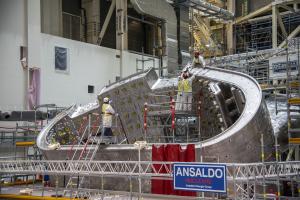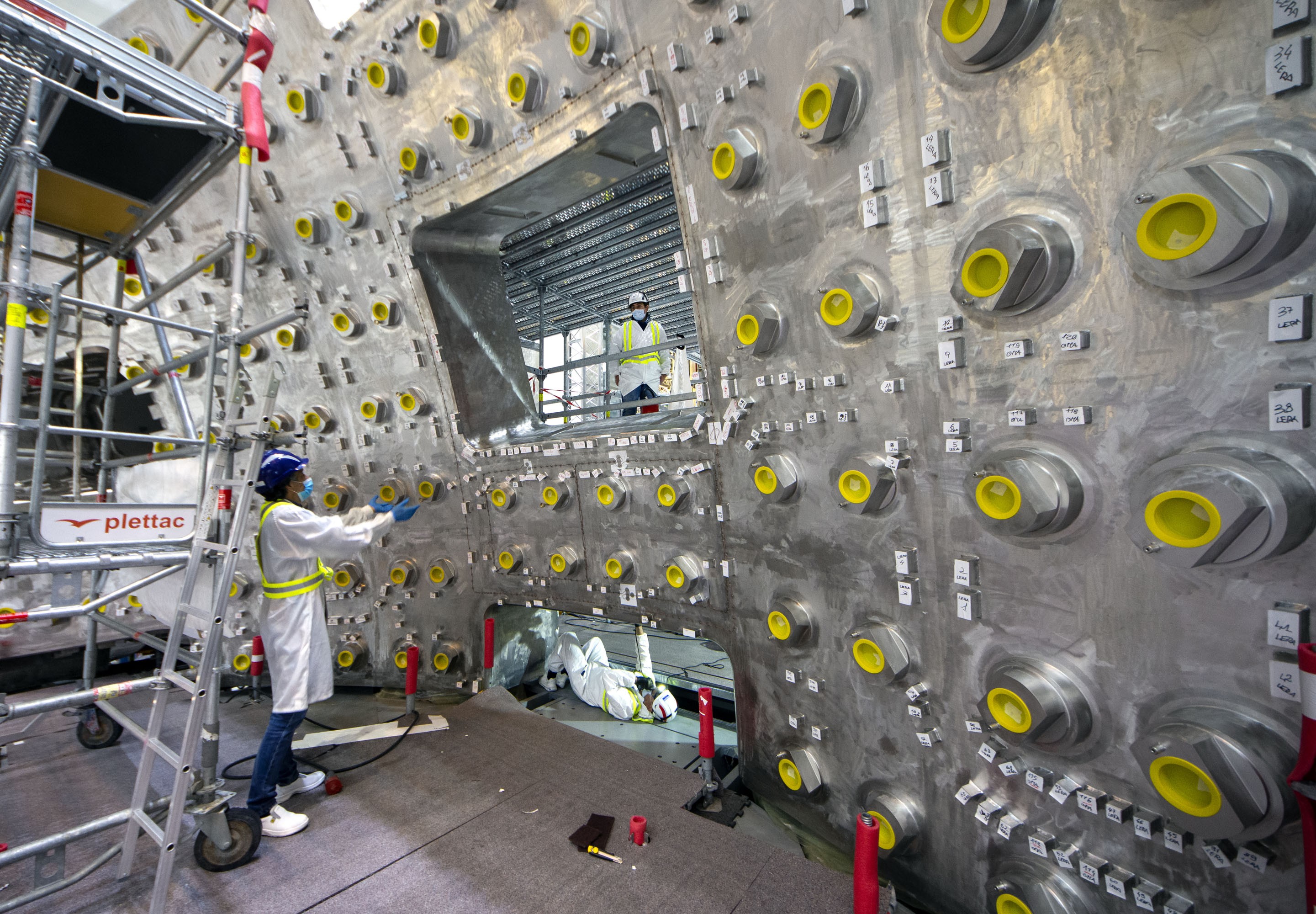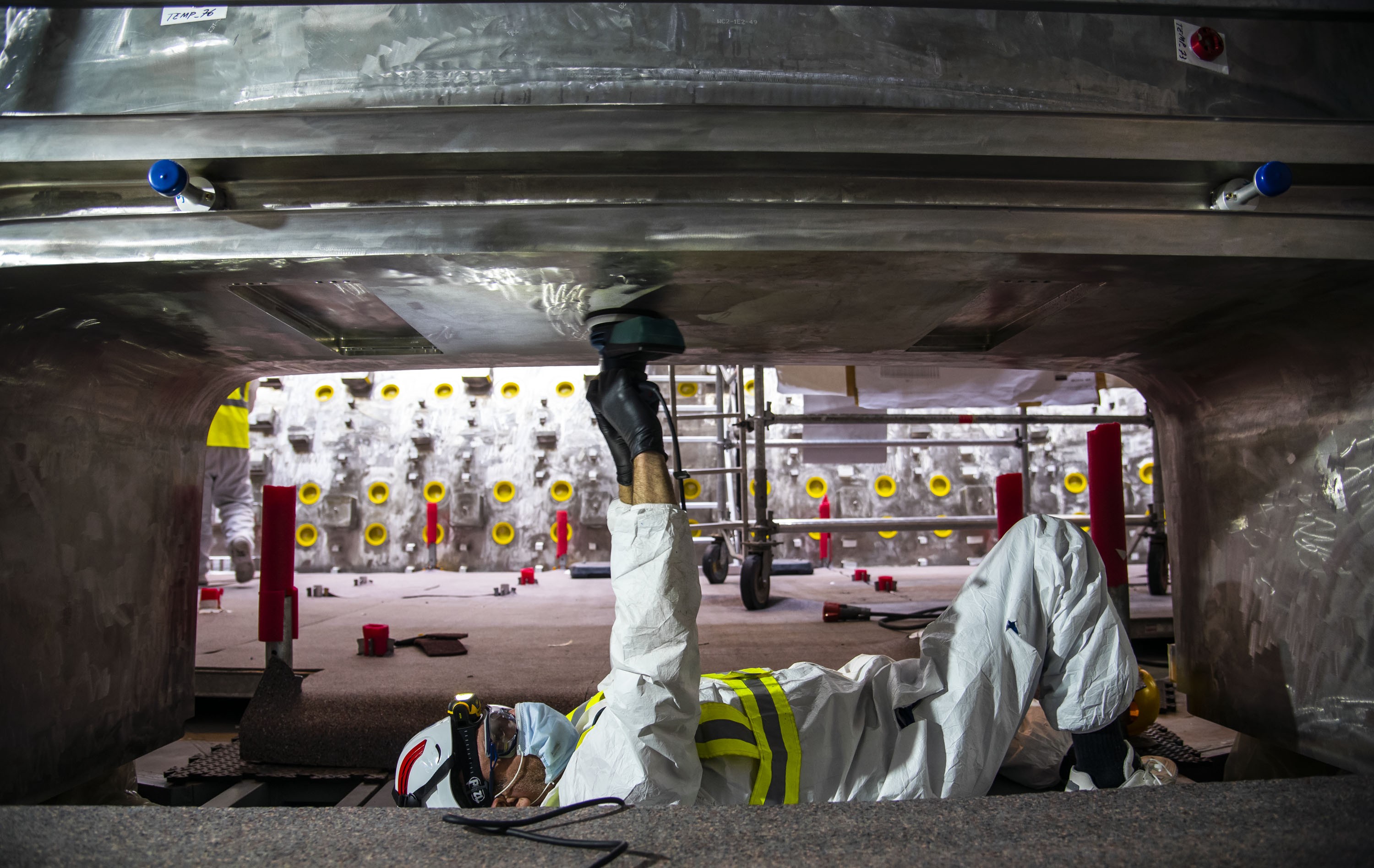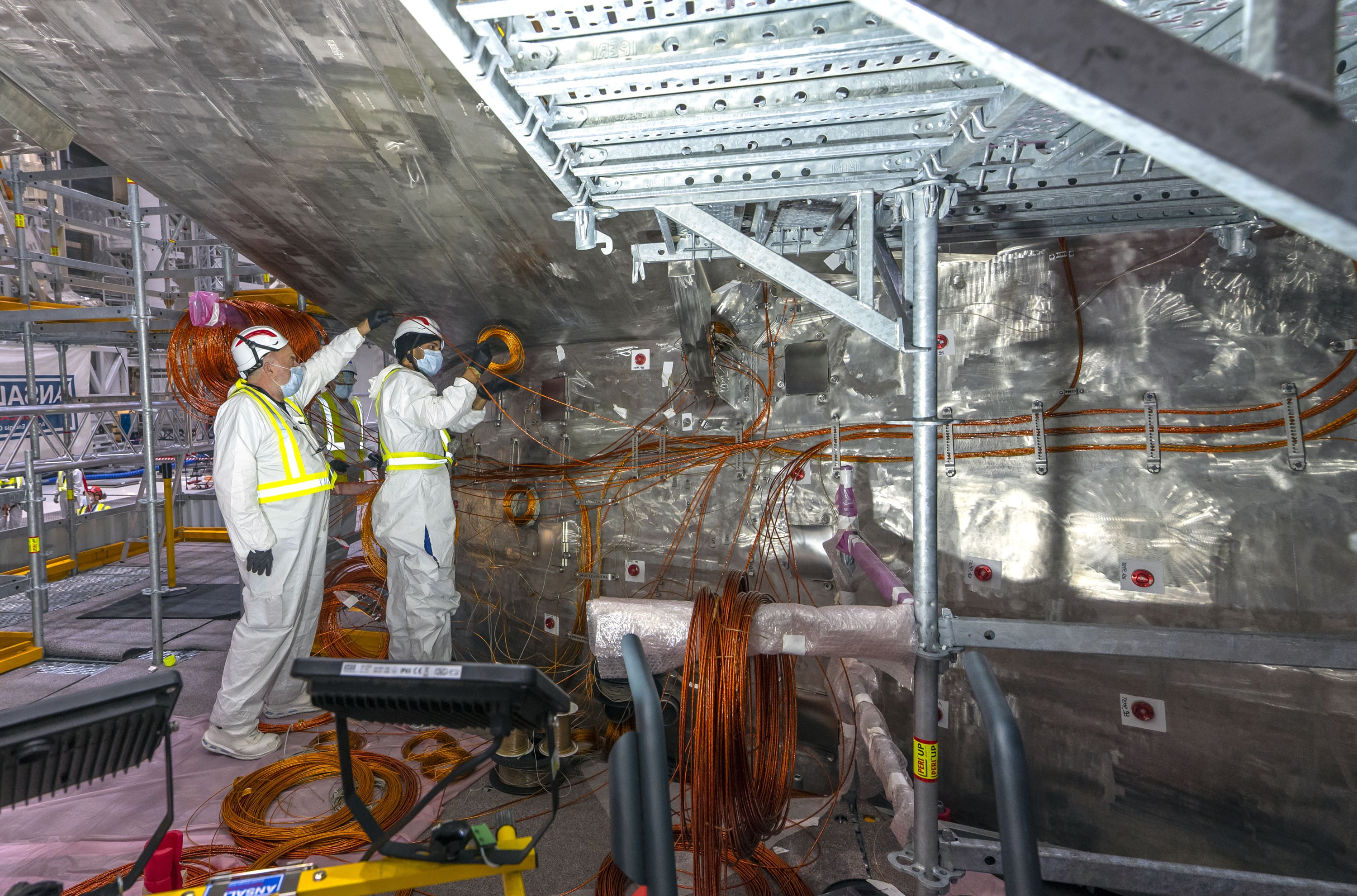L'expérience acquise permet d'aller deux fois plus vite
Une fois extrait du châssis de transport, du caisson métallique et des différentes couches d'emballage, le premier secteur de la chambre à vide, le secteur 6, a subi un essai d'étanchéité à l'hélium. Aucune fuite n'a été décelée au-delà de la limite de détection, et les valeurs étaient inférieures de moitié aux critères d'acceptabilité.
« Ces résultats ont clairement mis en évidence la qualité des procédures de contrôle du fabricant, Hyundai Heavy Industries, et d'ITER Corée. Nous avons donc décidé de nous dispenser de l'essai d'étanchéité sur site pour le secteur 1(7) », dit Alex Martin. Les équipes ont ainsi gagné une semaine de travail.
Avec moins de bossages mais un plus grand nombre d'étriers à installer, la main-d'œuvre nécessaire pour équiper le deuxième secteur sera équivalente à celle requise pour le premier. Mais cette fois, l'organisation est différente. « Nous sommes passés d'une vision séquentielle à une approche en parallèle. Dans le cas du secteur 6, cette tâche nous a pris environ quatre mois. Cette fois-ci, avec l'optimisation des procédures, nous espérons terminer les travaux en deux mois. »
Les travaux d'équipement du secteur 1(7) sont bientôt achevés et les préparatifs pour déplacer la pièce dans l'outil de basculement puis dans le portique de sous-assemblage (SSAT-1) ont déjà commencé. « Si l'on compare avec le premier secteur, nous avons dix semaines d'avance sur le planning et nous avons commencé à travailler sur l'opération de levage en préparant l'installation de la poutre radiale et de l'outil de levage du secteur. »
Pendant l'opération de sous-assemblage, le secteur 1(7) sera associé aux bobines de champ toroïdal 8 (TF8, venue du Japon) et 9 (TF9, fabriquée en Europe). Ce deuxième sous-assemblage, qui bénéficiera certainement, lui aussi, des enseignements tirés de la première opération, devrait être installé dans la fosse du tokamak d'ici le milieu de l'année 2022.
Alors que sept autres secteurs de la chambre à vide restent à équiper avant assemblage et installation, sera-t-il encore possible de progresser et de gagner du temps ? « Bien sûr », sourit Alex Martin.





